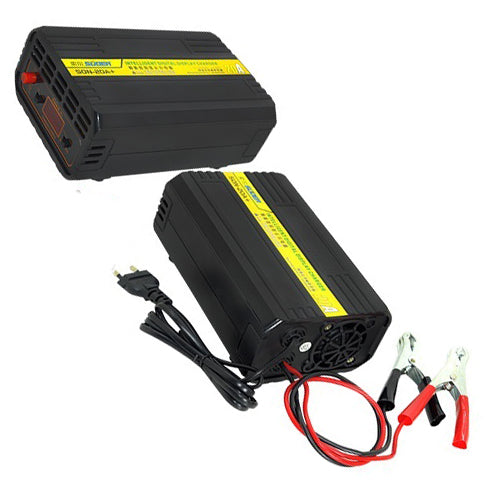You use or are thinking about using a deep-cycle battery probably for backup and you’re wondering where to find a good deep cycle battery charger to keep it charged when you need it. Not all lead-acid car battery chargers are designed to be a deep cycle battery charger, especially since the needs of a deep cycle battery are drastically different than those of a regular car battery.
A 12V deep cycle battery is a lead-acid battery that is used in applications where it will spend much of its life being regularly deeply discharged.
That might include inverter batteries, motorized wheelchairs, and scooters, remote-site, traffic signals, uninterruptible power supplies, to name some examples. A deep cycle battery charger must be able to handle their special needs when charging deep cycle batteries.
Batteries used in cars and trucks are designed to deliver high-current, short bursts of power to crank over an engine. Once your vehicle is started, the alternator takes over and supplies power to the car’s electrical system and recharges the battery. A starter car battery may go through its whole life rarely being discharged much below 20% of its capacity. Usually, smart deep cycle battery chargers can also function as car battery chargers.
Deep-cycle batteries have special needs when it comes to recharging and maintaining. They last longer and charge faster if they are charged according to a temperature-dependent and battery chemistry-dependent schedule.
Under ideal circumstances an example schedule for a 200 amp-hour battery might be a Bulk Phase where charging proceeds at about 15 volts and 50 amps to approximately 75% charge followed by an Acceptance Phase where the battery is maintained at about 15 volts while reducing the amperage and charging the battery the remaining 25 percent capacity at a declining rate.

Once charged, the battery should be maintained using a Maintenance Float Phase where the voltage is reduced to around 13.4 volts to maintain the battery without losing electrolyte.

